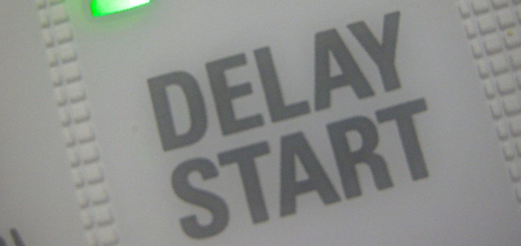Can We Design Our Way Out of Procrastination?
Procrastinating or putting things off when it is not in our best interest to do so is a common problem. According to research reported on Psychology Today:
 “Everyone procrastinate sometimes, but 20 percent of people are true procrastinators. They consistently avoid difficult tasks and deliberately look for distractions, which, unfortunately, are increasingly available. Procrastination in large part reflects our difficulty in regulating emotions and to accurately predict how we will feel tomorrow, or the next day. Procrastinators say they perform better under pressure, but that’s just one of many lies they tell themselves. Since procrastinators are made and not born, it’s possible to overcome procrastination—with effort.”
“Everyone procrastinate sometimes, but 20 percent of people are true procrastinators. They consistently avoid difficult tasks and deliberately look for distractions, which, unfortunately, are increasingly available. Procrastination in large part reflects our difficulty in regulating emotions and to accurately predict how we will feel tomorrow, or the next day. Procrastinators say they perform better under pressure, but that’s just one of many lies they tell themselves. Since procrastinators are made and not born, it’s possible to overcome procrastination—with effort.”
This makes procrastination a major cognitive design challenge. As with all such challenges the first step is to understand the underlying cognitive processes and needs.
Procrastination is driven by a host of cognitive biases (faulty mental models) and failures to self-regulate. A key question is can we understand the biases well enough to design improved task assignment/management processes that help us avoid the self-regulation failures that lead to procrastination?
I believe the answer is yes. One body of work that is especially useful for designing our way out of procrastination is Temporal Motivation Theory. It provides an equation-based way to assess the relative utility of one task over another as a function of how likely we think it is to happen, the amount of perceived reward, the amount of delay associated in getting the reward and our sensitivity to a delay in receiving the reward. This last factor, sensitivity to delaying the reward, is called the gamma or G-factor and strongly determines the psychographics (or set of cognitive needs) of the folks you are designing for.
For a quick introduction to Temporal Motivation Theory and its implication for cognitive design you can review these slides from a workshop I delivered to a client in financial services. You can also visit Procrastination Central a research site maintained by the University of Calgary.
March 28th, 2010 at 2:32 pm
[...] I had written an article about a more human approach to brining users into the design equation. …Cognitive Design Blog Archive Can We Design Our Way Out …Leave a Reply. Name (required) Mail (will not be published) (required) … Cognitive Design is [...]
December 11th, 2014 at 10:31 am
cheap jordan 6 black infrared…
Cognitive Design » Blog Archive » Can We Design Our Way Out of Procrastination?…